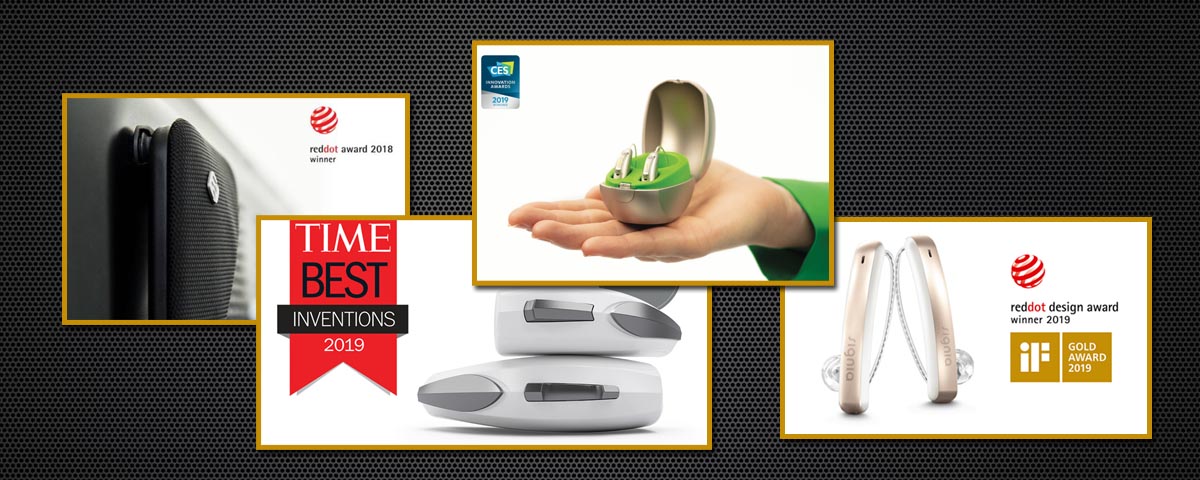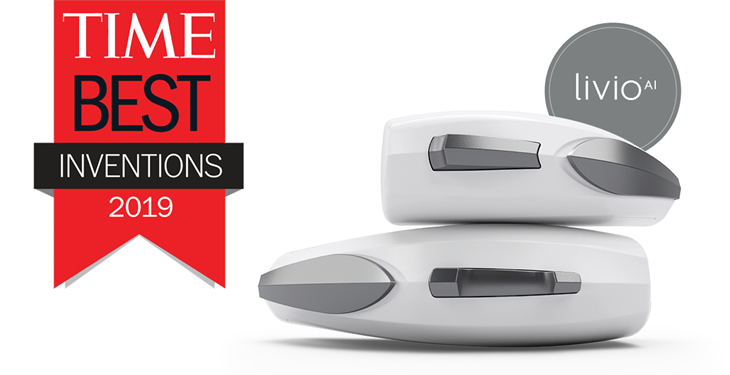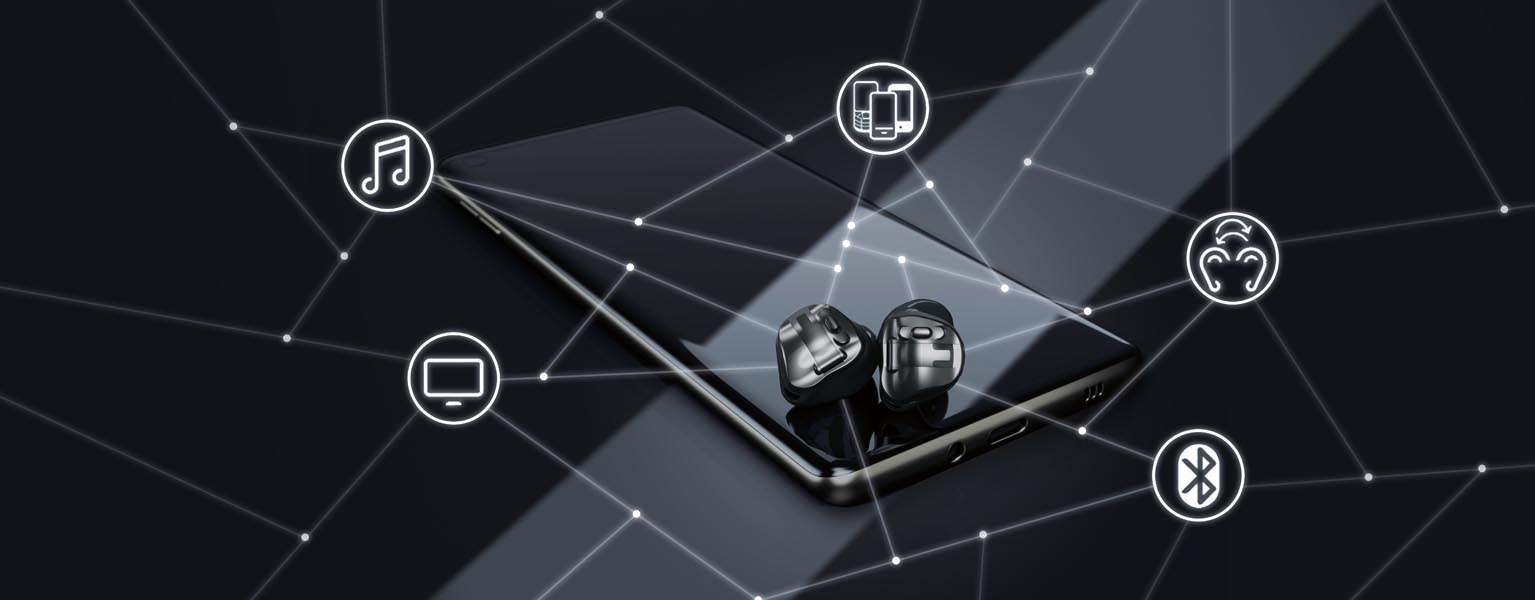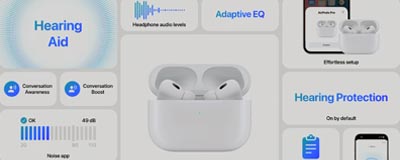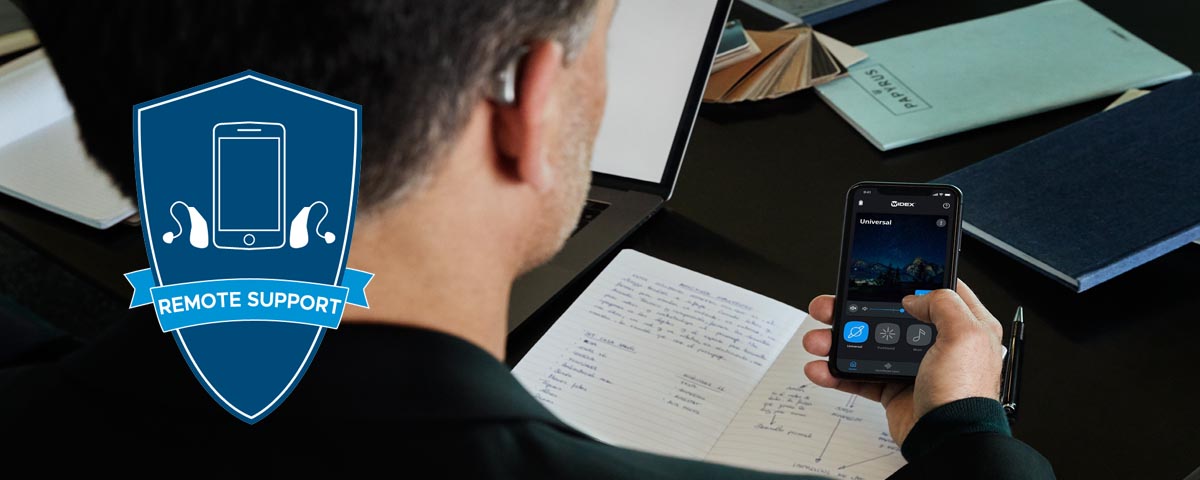In one of our recent TV commercials, Wayne Rostad says “in fact, they’re cool” when talking about some of the things that modern hearing aids can do. Over the years, there has been such a stigma around hearing aids that his statement may seem laughable to most people, but I would have to agree with him. Granted, I love technology, but I actually get excited every time I get an opportunity to tell people about all of the amazing things that modern hearing aids can do. Does this mean that we are at a point where hearing aids are an enviable fashion accessory? Not even close. But the technology inside of them, and how they can both simplify and enhance people’s day-to-day lives is pretty amazing. How cool is this technology? Over the past few years, hearing aid manufacturers have been racking up different technology awards from all sorts of different organizations (some of these are listed at the end of this post). Here is a quick look at some of the recent developments and award winning technology that lives inside new hearing aids.
New Technology:
Automatically Adjusting: Although hearing aids have had the ability to automatically change programs since the early 2000’s, it started off as being able to jump between a speech in quiet and a speech in noise setting. Over the past few years, hearing aids are now able to analyze the sound environment that you are in, compare information about it between the left and right devices, and then adapt the settings for that specific environment. This has created much more efficient adjustments while providing a smoother listening experience.
Motion Sensors: One of the latest additions to hearing aids is the addition of motion sensors. This provides the manufacturers with several different options for improving quality of life. Starkey has used this technology in an interesting way, adding step counting as well as fall detection and alerting benefits for their users. Through their app, you can track your steps and activity, much like a Fitbit.
Other manufacturers, such as Signia in their Pure X products, are using this information to better evaluate listening needs. Here is an example of how motion sensors can help an individual hear better. Two hearing aid users are on the side of a busy road. One is sitting on a patio having dinner with their family. The other is walking with their spouse down the street next to the patio. For the first individual, being stationary in a noisy environment, they will likely want the hearing aid to focus on the person across the table from them that they are looking at, and decrease the sounds of the road noise and people walking by. For the person in motion walking, they will want the hearing aid to continue to offer sounds from all directions so they can hear the person beside them and also any other sounds for increased safety.
Music Programs: For a long time, all of the advancements in speech enhancement and sound smoothing that helped the hard of hearing understand speech better made listening to music somewhat of a challenge. In recent years, manufacturers have been working hard to maximize how music sounds as well. One of the things that has helped is that new speakers have more high frequency response, allowing them to amplify more of the sounds in music. The microphone technology is also improving, allowing more of the sound to be captured without distortion. Further to that, manufacturers are creating more programs (inside of the automatically adjusting and outside) to help with the sound quality of music. Widex Evoke and Moment automatically offer different frequency responses for classical than for contemporary music. Signia has special manual music programs to select for live, recorded or while performing. Each of these offer different parameters to make it sound better for that intended purpose. Phonak can even classify its streamed signals as speech or music, making a significant improvement of the music quality.
Direct Streaming: The vast majority of new hearing aids (other than the smallest options that sit deep in the ear) now offer a direct connection to many of your different devices, such as smartphones and TVs. By connecting your hearing aids directly to these devices, it allows you to hear the sound at exactly the volume that you want while improving speech clarity.
The latest Phonak Marvel hearing aids can connect directly with almost all Android and iPhone smartphones. With these devices connected, you will be notified when a call is coming in by a ringing through the hearing aid. All you need to do is push a button on the device to answer the call and the other person’s voice will come right through the hearing aids. The microphone on your hearing aid will pick up your voice and send it back to the phone. This means there is no need to take the phone out of your pocket or purse when using it. A truly hands free solution!
GPS Tracking: We have been asked for years for a way to help find lost hearing aids. Making use of direct connection to smartphones and the GPS data within the phone, several of the new models of hearing aids can keep track of when the hearing aid was last within range of your cell phone. This location can then be shown on a map, making it much easier to track down a lost device.
3D Printing of custom shells: For any of the custom components of a hearing aid, the manufacturers are now using 3D printing technology to replicate the ear as accurately as possible. Phonak has even started using a 3D printed premium medical-grade titanium material for their smallest device, the Virto Titanium IIC. These titanium shells are only half as thick as a traditional acrylic shell, allowing us to fit all of the electronics into an even smaller space. They also provide 15 times the strength of a traditional material.
Real Time Language Translation: Through the Starkey Thrive App, the Livio AI hearing aids are actually able to listen to someone speaking another language and then translate what they said using Google’s proprietary Google Translate. The hearing aids then have an automated voice that relays the translation into your ears. This is something straight out of a sci-fi movie not too long ago. At this point in time, unless the other person also has these devices themselves, it still isn’t possible to have a two way conversation with both people speaking their own language, but it should certainly make traveling to a foreign country much easier.
Despite not having a hearing loss, I am constantly testing and using new models as they come onto the market. For me, the handsfree phone, sound quality while streaming music and the amazing comfort that they provide over other Bluetooth headphones on the market has me constantly putting my hearing aids in my ears.
Again, I understand that not all of these features will be relevant for everyone, and that needing to wear hearing aids is still not considered cool by the mainstream. With that said, there is no denying that the technology that is being built into them is advancing faster than ever, and much of it is incredibly cool. We see people in our clinics daily who are excited about how these new technologies are improving their quality of life!
Recent Award Winners:
Time Magazine – “Best Inventions of 2019” awards
The Starkey Livio AI hearing aid was the recipient of Time magazine’s coveted “Best Inventions” in 2019. Here are some of the features that made it stand out from the crowd. The AI in the name refers to Artificial Intelligence, and this hearing aid is truly capable of so much more than just making sounds louder. Click here to read more.
CES Awards
The annual Consumer Electronics Show (CES) is the most influential tech event in the world. This event has become the place to launch breakthrough technologies and showcase global innovators from every aspect of the tech sector.
2019 – Phonak Marvel – Innovation Awards Honoree – Accessibility
2019 – Phonak Virto Titanium – Innovation Awards Honoree – 3D Printing
2019 – Starkey Livio AI – Innovation Awards Honoree – Accessibility
2018 – Oticon Hearing Fitness App – Innovation Awards Honoree
2017 – Resound Enzo – Innovation Awards Honoree – Accessible Technology
2017 – Signia Cellion – Innovation Awards Honoree
2017 – Signia My Hearing App – Innovation Awards Honoree
Red Dot Design Awards
Red Dot stands for belonging to the best in design and business. Our international design competition, the “Red Dot Design Award”, is aimed at all those who would like to distinguish their business activities through design. The distinction is based on the principle of selection and presentation. Excellent design is selected by competent expert juries in the areas of product design, communication design, and design concepts.
2019 – Signia Styletto – link here
2019 – Starkey Livio AI – link here
2018 – Oticon Connect Clip – link here
2018 – Phonak Virto B-Titanium – link here
2018 – Phonak Audéo B-Direct – link here
2018 – Phonak EasyView Otoblock – link here
2018 – Widex TV Play – link here
2018 – Widex Fuel Cell – link here

